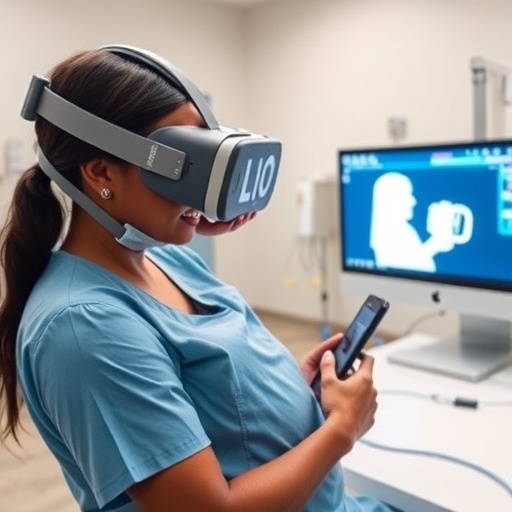In the realm of healthcare, the implementation of electronic health records (EHRs) has marked a significant shift in the efficiency and management of patient information. With advancements in technology, the focus has increasingly turned toward the optimization of electronic discharge summaries, particularly for specialized fields such as ophthalmology. A novel study led by Zafarnezhad et al. provides vital insights into the design and potential benefits of electronic discharge summaries tailored for ophthalmology patients. This influential research aims to bridge the gap between traditional documentation methods and contemporary digital solutions, streamlining the management of patient data while enhancing the quality of care.
Electronic discharge summaries serve as crucial documents that encapsulate critical information about a patient’s journey through the healthcare system, particularly after a hospital discharge. These summaries not only inform subsequent healthcare providers about the patient’s treatment and prognosis; they also empower patients with essential information regarding their care. The design of these documents needs to be both functional and user-friendly to ensure that they serve their intended purpose efficiently. This study explores the design elements that can maximize the utility of discharge summaries specifically for ophthalmology patients.
The importance of a well-structured electronic discharge summary cannot be overstated, particularly in managing eye health, where detailed information regarding diagnosis, treatment, and follow-up care is essential. The research by Zafarnezhad and colleagues delves into the specific components that should be included in an ophthalmology-focused electronic discharge summary, highlighting the distinct requirements of this specialty. The research team thoroughly analyzed existing templates and practices, identifying gaps and areas for improvement in current discharge summaries.
In their study, the authors implemented a multifaceted approach, taking into account various factors including user interface design, accessibility, and the integration of relevant clinical data. One of the pivotal findings of the research indicates that incorporating visual aids and simplified language into the discharge summaries can significantly enhance patient comprehension. Given the complexity of ocular conditions, patients often struggle with understanding medical terminology; thus, the use of straightforward language alongside diagrams could foster better patient engagement and adherence to follow-up care recommendations.
Moreover, the study highlights the need for standardization in electronic discharge summaries across ophthalmology practices. Inconsistent formats can create confusion among patients and healthcare providers alike, potentially leading to misunderstandings and lapses in follow-up care. By establishing a standardized template, the healthcare community can ensure that vital information is consistently communicated, reducing the likelihood of errors and improving overall patient outcomes.
The integration of telemedicine into the discharge process is another exciting development highlighted by the research. With the rise of telehealth solutions, there is immense potential for electronic discharge summaries to serve as a bridge between in-person and remote care. The authors advocate for including links to virtual follow-up appointments within these summaries, thereby facilitating seamless transitions to subsequent care and ensuring that patients receive timely follow-up evaluations, an aspect crucial in the management of eye conditions.
Furthermore, the research underscores the importance of collaborative input from healthcare stakeholders, including ophthalmologists, nurses, and patients themselves, when designing electronic discharge summaries. Their perspectives and feedback can be invaluable in shaping a document that truly meets the diverse needs of all parties involved in the care continuum. Engaging stakeholders early in the design process allows for the gathering of practical insights, which can enhance both the relevance and usability of the final product.
One key component that emerged from the study is the necessity for training healthcare staff on how to effectively utilize electronic discharge summaries. It is imperative that medical professionals are proficient in both the technology and the importance of clear communication in these documents. Feasible strategies for training programs could include workshops and simulated scenarios that equip healthcare providers with skills to create meaningful discharge summaries that serve both clinical requirements and patient comprehension.
As the healthcare landscape continues to evolve, the potential for electronic discharge summaries to enhance patient care in ophthalmology cannot be overlooked. By fostering a more efficient, integrated approach to documentation and communication, healthcare systems can improve the continuity of care. The study by Zafarnezhad et al. sets a significant precedent for future research and innovation in the optimization of discharge processes.
Looking ahead, further research is essential to assess the long-term impact of enhanced electronic discharge summaries on patient outcomes in ophthalmology. Investigating metrics such as readmission rates, patient satisfaction, and adherence to follow-up care will provide crucial insights into the effectiveness of these innovations. The study serves as a foundation for ongoing exploration of how technology can enhance practical aspects of healthcare delivery, particularly in specialized domains.
Technological adoption in healthcare often presents challenges, yet studies like this one illustrate that the design and implementation of electronic discharge summaries represent a promising avenue for improvement. More rigorous clinical research could further elucidate the myriad potential benefits these summaries may bring to patient care management. The study’s implications extend beyond ophthalmology, suggesting that similar frameworks could enhance the discharge processes in a variety of medical specialties.
As we pave the way towards a more digitally empowered healthcare system, the design and execution of electronic discharge summaries will undoubtedly play a crucial role in shaping the future of patient care. It is a realization of how technology can bridge the gaps in healthcare delivery, creating a more patient-centric approach that respects and responds to individual needs. The movement towards optimizing electronic health records and discharge summaries is not just a trend; it’s a necessary evolution towards better health outcomes in the modern era.
In conclusion, Zafarnezhad et al.’s research contributes significantly to the understanding and development of electronic discharge summaries in ophthalmology. It presents concrete recommendations for enhancing the design and functionality of these vital documents, with the overarching goal of improving communication and care coordination for ophthalmology patients. As the healthcare community grapples with increasing demands for efficiency and quality, the insights from this study encourage a forward-thinking approach that embraces innovation in patient care.
Through the lens of this research, stakeholders are reminded of the ongoing journey to optimize healthcare delivery through electronic systems. As we continue to innovate and refine these tools, the ultimate beneficiaries will be the patients, whose experiences can be enriched through thoughtful design and robust implementation of electronic discharge summaries.
Subject of Research: Electronic health record management for ophthalmology patients
Article Title: Electronic discharge summary design: a step towards electronic health record ophthalmology patients.
Article References:
Zafarnezhad, B., Sadeghi, J., Abasi, S. et al. Electronic discharge summary design: a step towards electronic health record ophthalmology patients.
BMC Health Serv Res 25, 1250 (2025). https://doi.org/10.1186/s12913-025-13462-6
Image Credits: AI Generated
DOI: 10.1186/s12913-025-13462-6
Keywords: electronic health records, discharge summary, ophthalmology, patient care, healthcare innovation
Tags: benefits of electronic health recordsbridging traditional and digital healthcare methodsdesign elements for effective discharge summariesdigital solutions in ophthalmologyelectronic discharge summaries in ophthalmologyenhancing communication in healthcareimproving patient care with EHRsoptimizing discharge summaries for eye carepatient empowerment through discharge summariespatient information management in healthcareresearch advancements in ophthalmology documentationspecialized healthcare documentation





